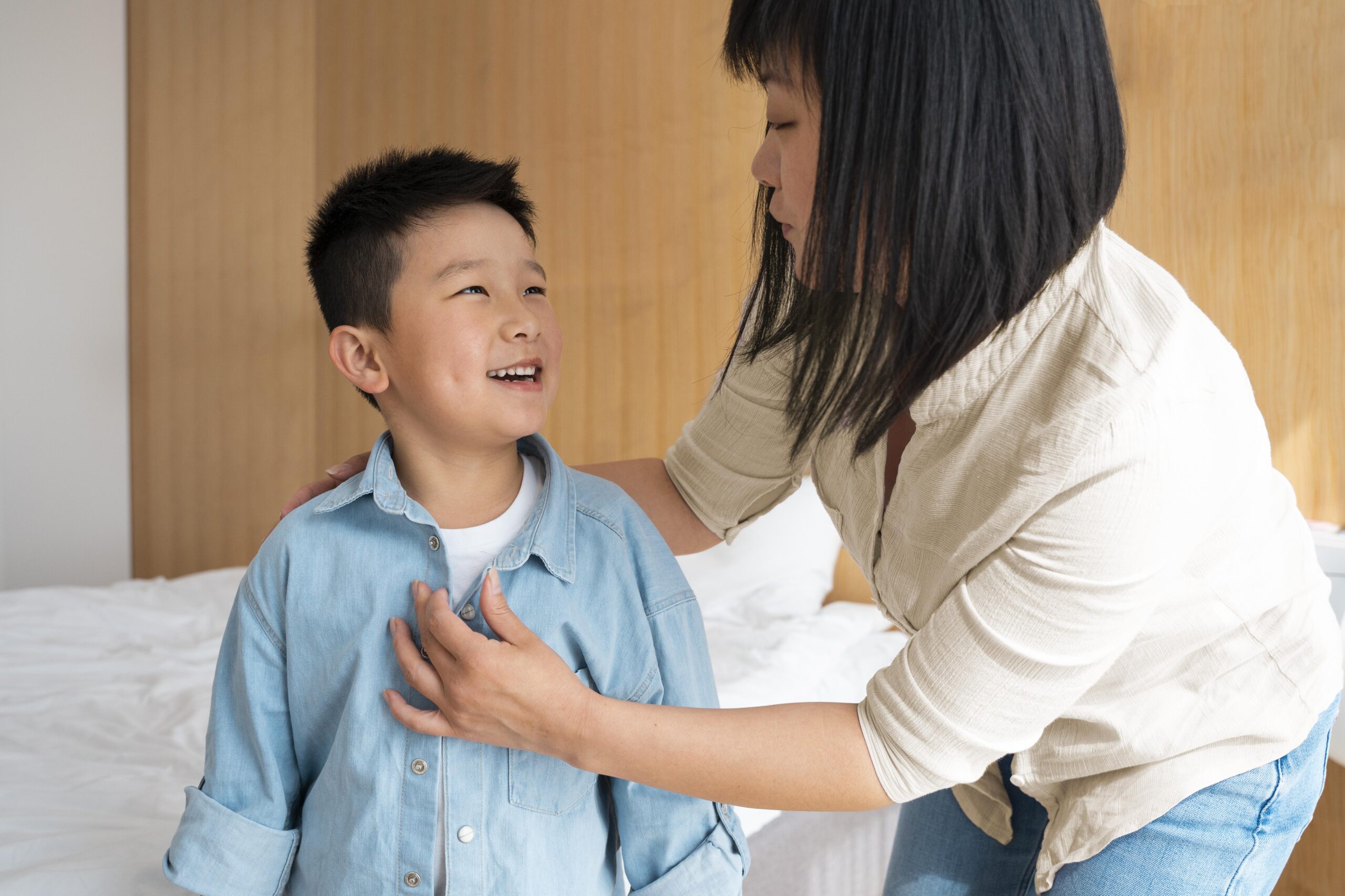Fevers in children are a common concern for parents and caregivers. The rise in body temperature can be alarming, especially when it involves young children. However, it is important to remember that fever itself is not an illness but rather a symptom of an underlying condition. Fevers are often the body’s natural defense mechanism, indicating that the immune system is responding to an infection. Nonetheless, the key challenge lies in determining when a fever can be managed at home and when it necessitates urgent medical care.
Understanding Fever: Normal Ranges and Concerns
A fever is typically defined as a rise in body temperature above the normal range. For children, the average body temperature is around 98.6°F (37°C), but this can fluctuate slightly throughout the day. A child is considered to have a fever if their body temperature exceeds the following thresholds:
- 100.4°F (38°C) or higher when measured rectally
- 99.5°F (37.5°C) or higher when measured orally
- 99°F (37.2°C) or higher when measured under the arm (axillary)
Fever Ranges and Their Significance
| Fever Category | Temperature Range | Assessment |
|---|---|---|
| Low-grade fever | 100.4°F – 102°F (38°C-38.9°C) | Mild; generally not a cause for concern |
| Moderate fever | 102°F – 104°F (38.9°C-40°C) | Common in viral infections |
| High fever | Above 104°F (40°C) | May require medical attention |
| Hyperpyrexia (very high fever) | Above 106°F (41.1°C) | Medical emergency |
Common Causes of Fever in Children
Fever in children can be caused by a variety of factors, most often as a result of an infection. Below are some of the most common causes:
- Viral Infections: The most frequent cause of fever, viral infections such as the common cold, influenza, or respiratory infections often result in low to moderate fevers. These generally resolve on their own with supportive care.
- Bacterial Infections: In some cases, fever may be caused by bacterial infections like strep throat, urinary tract infections, or pneumonia. Bacterial infections may require treatment with antibiotics.
- Teething: It is not uncommon for infants and toddlers to experience a slight rise in temperature while teething. However, fevers due to teething are typically mild.
- Immunizations: Fever can sometimes occur as a side effect of routine vaccinations. This is typically short-lived and not severe.
- Heat Exposure: Prolonged exposure to hot weather can result in heat exhaustion or heatstroke, both of which can lead to fever.
Evaluating Fever in Children
When evaluating a fever in a child, it is crucial to consider not just the temperature but also the child’s overall condition and any accompanying symptoms.
1. Age as a Critical Factor
Age plays a significant role in determining whether a fever warrants medical attention.
- For infants under 3 months of age, a fever of 100.4°F (38°C) or higher is considered a medical emergency, and immediate medical attention is necessary. Infants’ immune systems are still developing, making them more vulnerable to serious infections.
- For children aged 3 months to 3 years, a fever of 102°F (39°C) or higher, especially if accompanied by unusual symptoms, should prompt a call to a healthcare provider.
2. Accompanying Symptoms to Watch For
Fever is often accompanied by other symptoms, and these should be carefully monitored. The following symptoms in conjunction with a fever are indicators that urgent care may be required:
- Rash: A fever accompanied by a rash can be a sign of a serious condition such as meningitis or scarlet fever.
- Difficulty breathing: Rapid breathing, wheezing, or shortness of breath may indicate a respiratory issue that requires immediate attention.
- Persistent vomiting or diarrhea: These symptoms can lead to dehydration, which can be dangerous for children, particularly infants.
- Lethargy or unresponsiveness: If a child is unusually sleepy, difficult to wake, or unresponsive, this is a cause for concern.
- Stiff neck: A fever along with neck stiffness can be a sign of meningitis and should be treated as an emergency.
3. Duration of Fever
If a child’s fever persists for more than three to five days, a medical evaluation is necessary to rule out any underlying conditions that might require treatment. Persistent fevers can sometimes indicate a more serious infection or illness.

When to Seek Urgent Care
While many fevers can be managed at home, there are specific situations in which seeking urgent care is necessary. The following criteria can help determine when it is time to visit an urgent care facility or the emergency room.
Seek Urgent Care If:
- The fever persists for more than five days, regardless of other symptoms.
- The child’s fever does not respond to over-the-counter fever-reducing medications, such as acetaminophen or ibuprofen.
- A child younger than three months has a fever of 100.4°F (38°C) or higher.
- A child between the ages of three months and three years has a fever of 102°F (39°C) or higher, along with irritability, lethargy, or other concerning symptoms.
- The fever exceeds 104°F (40°C) and the child exhibits signs of discomfort or distress.
- The child has a history of febrile seizures (seizures triggered by fever).
- The child has an underlying medical condition, such as heart disease, sickle cell anemia, or a compromised immune system, which could increase the risk of complications.
Emergency Situations Requiring Immediate Care:
- The child is having difficulty breathing or shows signs of respiratory distress.
- The fever is accompanied by a stiff neck, indicating a potential case of meningitis.
- The child experiences a seizure lasting more than five minutes.
- The child is unresponsive, excessively drowsy, or confused.
- Blue or purple lips or other signs of poor oxygenation appear.
Home Management of Fever
In most cases, fever can be managed at home with basic care measures. Below are some steps parents can take to ensure their child’s comfort while closely monitoring their condition:
1. Hydration
Maintaining proper hydration is essential when managing fever. Encourage the child to drink water, clear fluids, or electrolyte solutions. For infants, breastfeeding or formula feeding should be continued as normal.
2. Adjusting the Environment
Dress the child in light, breathable clothing and keep the room at a moderate temperature. Avoid over-bundling, as this can trap heat and exacerbate the fever.
3. Fever-Reducing Medications
Over-the-counter medications like acetaminophen (Tylenol) or ibuprofen (Advil) can help reduce fever and improve comfort. Be sure to follow dosage instructions carefully based on the child’s age and weight. Aspirin should never be given to children, as it is associated with Reye’s syndrome, a rare but serious condition.
4. Rest and Recovery
Adequate rest is important for the body to recover from the infection causing the fever. Ensure that the child gets plenty of sleep and limit physical activity during this time.
5. Lukewarm Baths
A lukewarm bath can help lower body temperature. However, avoid cold baths, as these can cause shivering, which may actually increase body temperature.
Conclusion: Recognizing When to Act
Fever in children is often a normal response to infection and can be managed with home care in many cases. However, it is critical to recognize the warning signs that indicate the need for urgent medical attention. When in doubt, always consult with a healthcare provider to ensure that your child receives the appropriate care.
Being informed about fever management empowers parents to take the right action at the right time, ensuring the health and safety of their children.
Remember: early recognition of serious symptoms and timely medical intervention can make all the difference in your child’s well-being.
